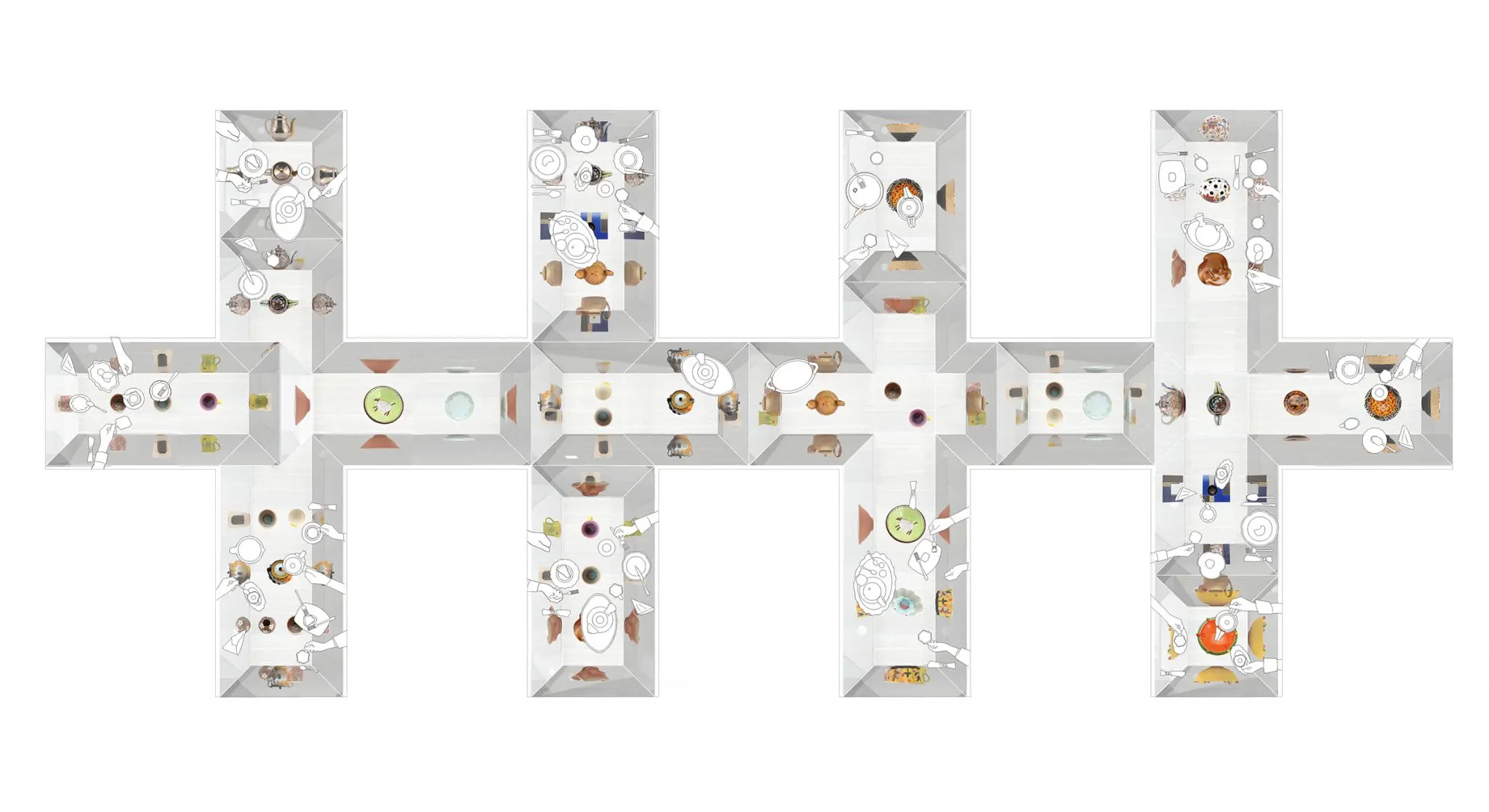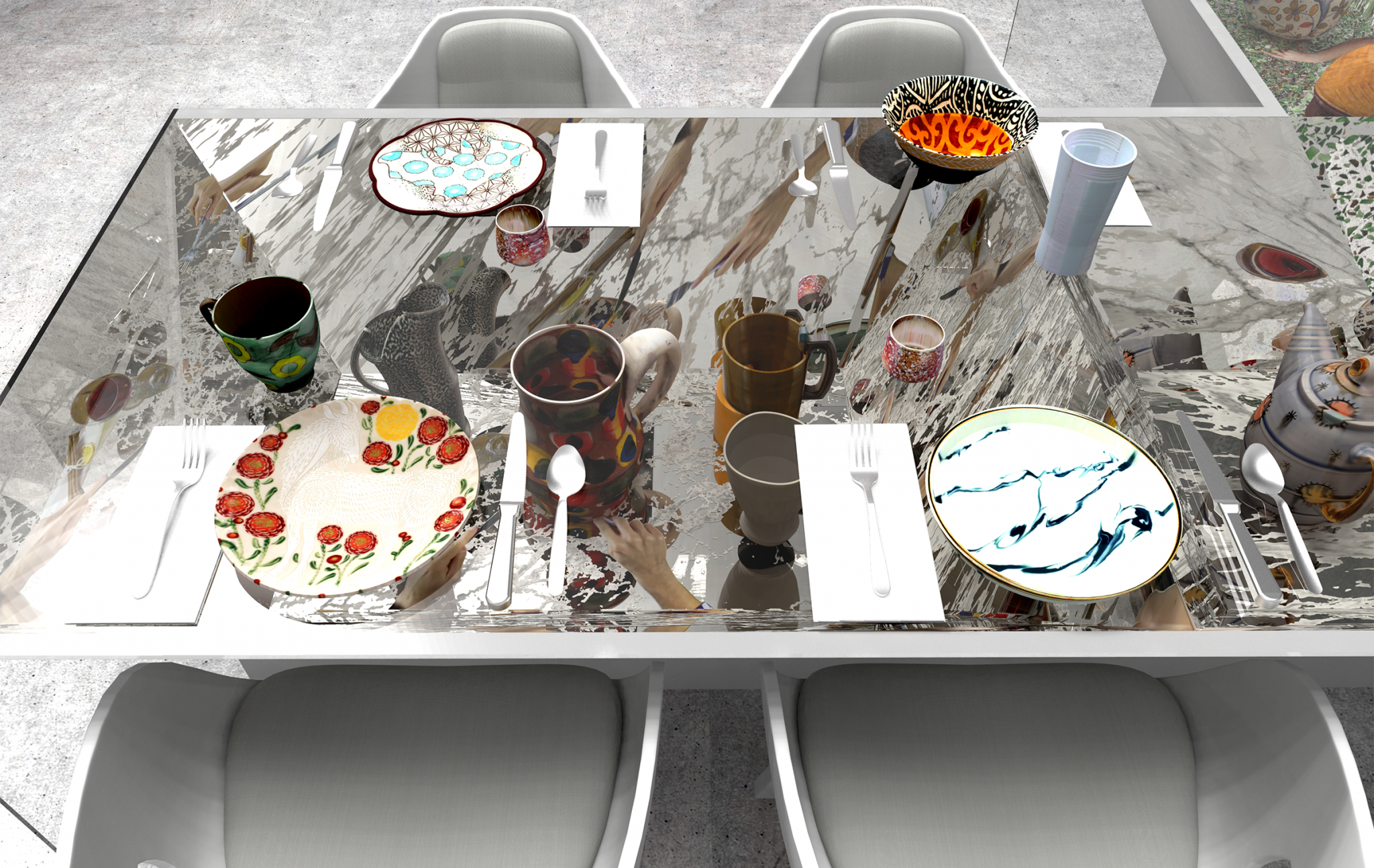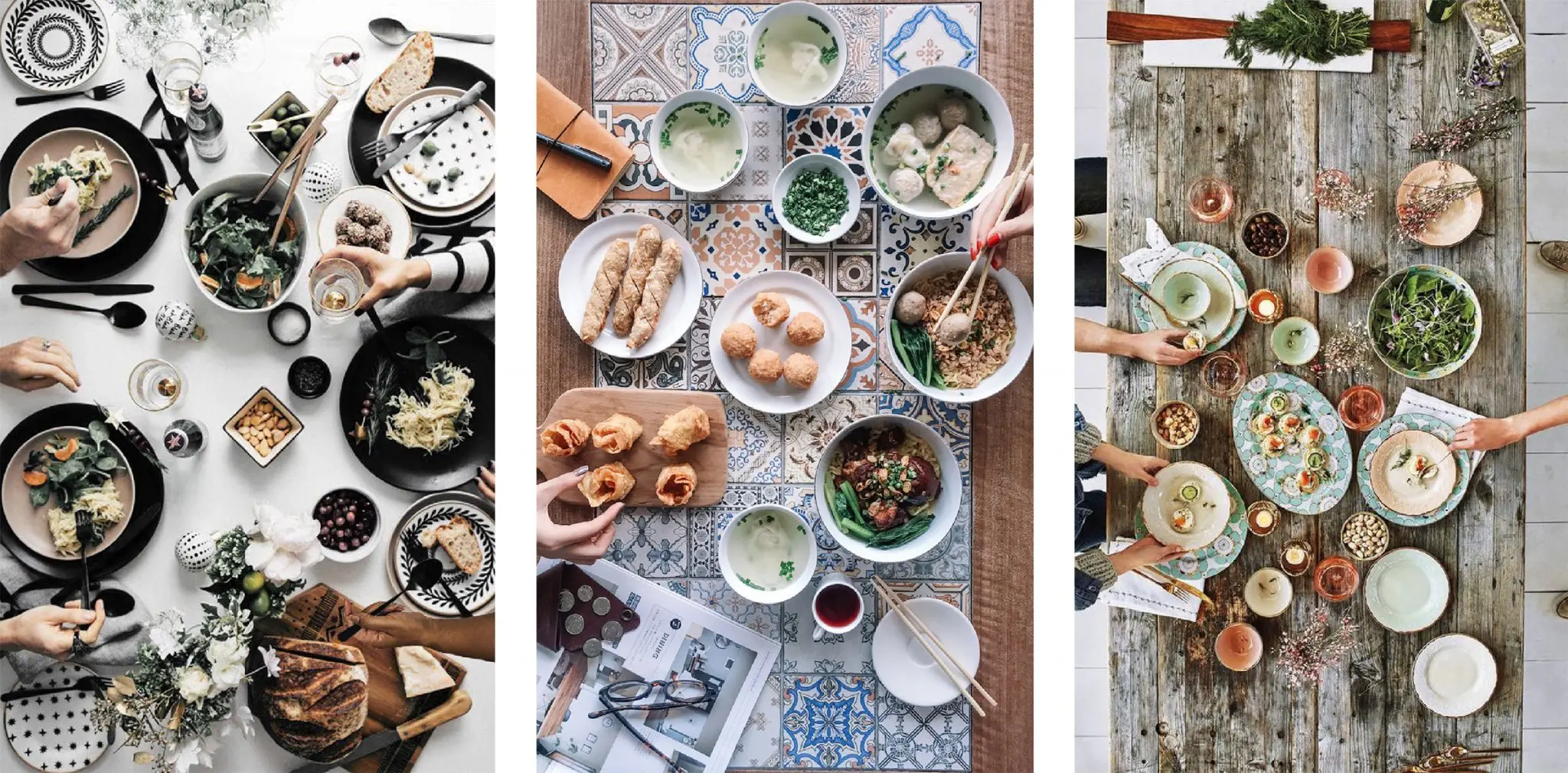Everson Museum Cafe
Everson Museum of Art, Syracuse NY, 2019

Our proposal for the Everson Museum Cafe and ceramics gallery for the newly-acquired Rosenfield Collection of ceramics begins with the museum’s mandate that the collection be engaged with through use. To do so requires a reinvention of how small sculptural objects are exhibited. Visitor access and handling of the objects are only one part of this new mode of display: it also involved witnessing how others use them, and how use generates social interaction and common experience.

We proposed a single large table composed of interlocking vitrines that display objects both in use on the tabletop and as part of the collection in the vitrines.

Our proposal allows visitors to physically interact with cups, plates, and teapots from the collection and it stages interacts between objects, which are generally designed to be part of part a group: a place setting or tea set. Each vitrine is a distinct stage set for a set of objects, arrangements that can be reconfigured with different objects and groupings over time.

This scenography is based on the typical Setting for ceramics when they are in use – the tabletop. Below the glass tabletop, the vitrine surfaces are printed with a specific graphic backdrop of archetypal tabletops from the lifespan of the collection – steel tabletops from American diners, the white tablecloths of nouveau cuisine, or rustic wood surfaces of farm-to-table dining. These settings speak to the history of how these objects have been used.

The scenography is printed on mirror, allowing reflection to filter through the graphic. Relying on our interest in architectural illusion and constructed perspective, each printed graphic is a projected reflection of the tabletop scene, if it were on the tabletop and seen from a particular viewpoint.
This projection creates the illusion of a fictional tabletop on top of the glass surface. As the viewer moves, the tabletop alternates between cohesive and fractured view.
Project Team: Taka Tachibe, Brandon Wetzel